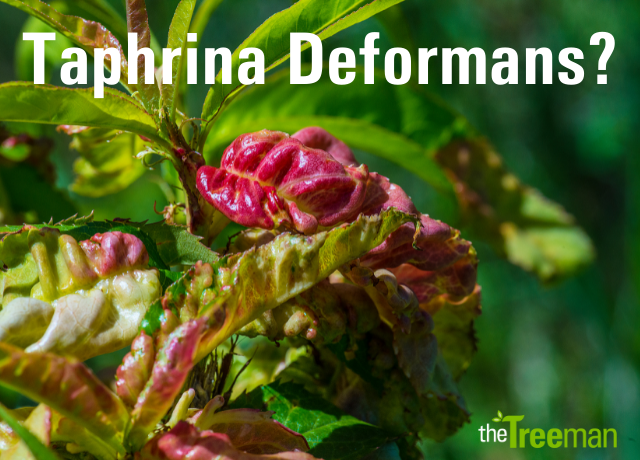
Curley leaf?
Curley leaf, or Taphrina deformans, is a common unattractive fungal disease that affects peaches and nectarines. The spores overwinter in the bark of trees and infect the fresh growth. With the change in temperature, spores are produced and then blown around the tree. When your trees break bud and the new leaves appear, you may see this trademark deformity in all its glory.
The leaves will become distorted, discolored, and sometimes form gnarly growths. In severe cases, the leaves may eventually fall off. Fruit may also be affected and drop early. If left untreated the problem will get worse every year and will reduce the trees’ ability to produce fruit as the distorted leaves are unable to photosynthesise. .
Planting your trees where there is good airflow will minimize fungal problems.
Once your leaves are infected then it’s too late to get rid of it so spraying before bud burst is essential to capture the overwintering insects and fungal spores.
Spraying with an oil will smother and suffocate the insects and using copper oxychloride will treat the spores. Lime Sulphur can also be used to burn off overwintering insects and fungi.
Fungal diseases that may affect your tree include:
Brown spot
Scab
Black spot
Botrytis
Spraying with a copper-based spray that is nontoxic to bees before bud burst and then again 2 weeks afterwards will help control the spores. There are loads of different sprays readily available including many organic options.
If you are lucky enough to grow apricots in your garden then extra care is needed with spraying as they can be very sensitive and you may need to dilute the mix.
A healthy tree is always your first line of defense against mother nature’s nasties so good nutrition, proactive pruning, removal of dead wood, and mulching will always give your tree a head start on any external attacks.